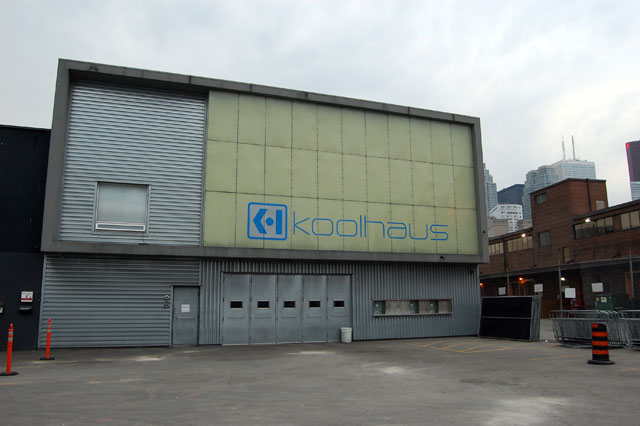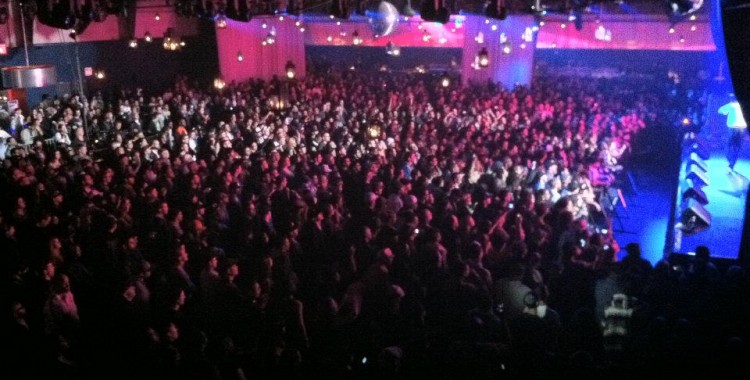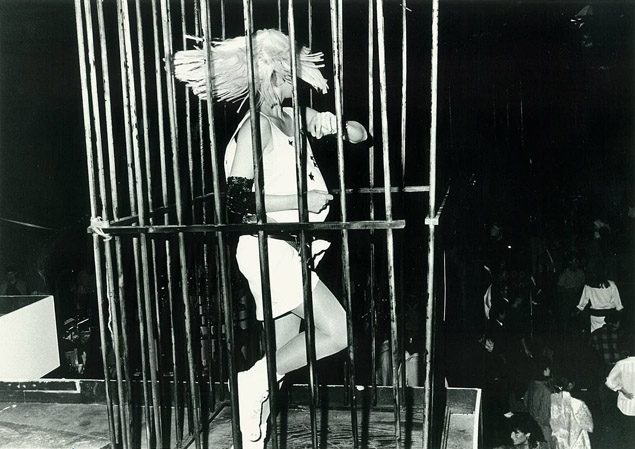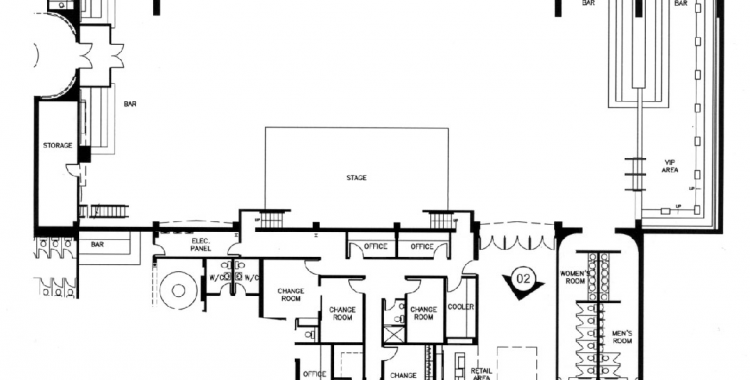Analyzing the site: Kool Haus (The Guvernment Complex)
Site: Kool Haus (The Guvernment Nightclub Complex)
Location: 132 Queen’s Quay East
Description:
The Guvernment is one of Canada’s largest and longest running entertainment complex that is located at 132 Queen’s Quay East Street in Toronto. It is made up of nine rooms that play a variety of different music and hold a capacity of 10,000 people. Beside it, this nightclub owns a venue that was once known as “the warehouse” which is now called “Kool Haus”. The Kool Haus is mostly used for DJs as well as various artists from different genres that demand for a large crowd than the main room of the Guvernment complex and is typically a elected venue for the Guvernment’s large multi-artist nights. It is a particular popular venue for people who partake in the music events of EDM, Reggae and Soca as well as for fans of pop, rock and hip-hop artists that perform concert there.
History:
In 1984, the Assoon brother wanted to build on the success of their nightspots on Richmond Street in Toronto by opening a restaurant and nightclub on 132 Queen’s Quay East Street. Although their diner plans would not work out this would result in them converting the warehouse on Queen’s Quay and changing it to “RPM Nightclub” which had open its doors in the summer of 1985. With the creative director being Murray Ball and Martin Arts dealing with the business, the site developed as a prevalent scene for Toronto’s nightly entertainment.
The site appealed to many DJs, visual artist and lives music bookers that built an audience that was vast among its capacity, which was 1,100 at the time. The venue was able to get a free shuttle bus service from Union Station, making easy for people to get to RPM, while an inventive sound system meant that live-music lovers and fans of Djs sound were preserved for amazing noise from their favourite musicians.
Visuals in this site were created to captivate people with enormous artwork all over the venue. Murray Ball decorated constantly with wax figures and neon signs on the ceilings of RPM to make the site more extravagant. His artistic vision was a perfect composite for a dance club with an rock environment. The main floor was huge for people to dance and move around with a raised stage and Dj Booth. The social centre in the main room of RPM was the big room with an upstairs lounge area space with pool tables.
RPM was a pioneer for the transformation of warehouse-to-club in Canada making Djs such as Terry Kelly and Chris Sheppard recognized as the dance music genre was starting to become more entertaining than live music. It was a site where diverse cultures was able to dwell with each other. Terry Kelly who was already a recognized character in Toronto took on various night at RPM. Valued for his programming and mixing skills, he primarily work at the club for Pshyedelic Mondays, Disco Thursday as well as dance music Sundays. Chris Sheppard on the other hand was focused to play more underground music by hosting all age events with his mixture of house, rave and hip-hop music. RPM was able to bring acts like the Skinny Puppy, the Beastie Boy and even the Rolling Stones for a surprise concert onto the stage of RPM for regular cover, which was 10 dollars at the time.
However it would end up being closed down for several years and in summer of 1996, Charles Khabouth of Ink Entertainment relaunch the warehouse turn nightclub as well as renaming the venue as “The Guvernment Complex”. With the help of Albert Assoon, one of the brother who previously owned RPM as well as Gareth Brown who booked the surprise concert for Rolling Stones in Toronto, Charles was able to make venue once again the biggest attraction in Toronto’s night entertainment. Although the bar in the centre was moved, most of the space in the complex remains unchanged. The venue had a amusing mood with cheery murals, a disco ball and psychedelic furniture.
Since then Guvernment as well as Kool haus has formed a status of hosting many of the world’s top DJs and artist as well as be acknowledged as one of the largest party spaces in North America. Currently, The Guvernment complex was voted 22nd nightclub in the world according to DJMags’s Top 100 clubs of 2013.
Analysis:
According to its specifications, Kool Haus is roughly around 27,000 square feet which gives the space the capacity to hold around 2500 people during live-music events as well as 700 seated dinners. The structure can not only be used just for concerts and nightclub occasions but can also be used for fundraising galas, product launches as well as private events.
When you enter the Kool Haus venue from their main entrance, the very thing first that I saw on my right was a huge coat checkroom. Most nightclub have a coat room that allows people to leave their jackets in a safe place while they enjoy the night socializing and dancing in the club. Because Kool Haus can hold a large capacity of people and the venue can get humid during live music events, this venue has a lot space to put as many coats as possible.
There are about four bars in the venue with one located on the right side when you enter as well as three other bars spread across the room. This allows for people to get to get their beverages and socialize with others as it create more space in the site and allow for no interruption with people interacting on the dance floor or stage. Behind the bar that I saw when I entered, is the VIP area where people who paid for a booth can stay in that area and order bottles as well as socialize with others in that area without entering the main floor. This area would seem to be less crowded and easier to get drinks than it would in the central part of the site.
I notice that in the venue, Kool Haus used distinctive lightings for two things: One way was the use of normal lighting to show everyone who was on the stage as well as a spot light depending on what artist or Dj was performing. Another way was by using different lights that would move around the room with different colours to make the space feel more fun and comfortable to interact in a place where the room was fairly dim. They also had a video projector beside the stage that allow people to see whatever Kool Haus wanted to show whether it was something they were promoting or whatever was being presented on the stage.
Majority of the space in the venue would be the dance floor. This place has a lot room for people to interact, socialize and dance almost anywhere in the venue. In terms of a concert events where some people at other sites may have to stay where they are seated, Kool Haus allows people to move around the room and go anywhere without staying in one designated place. And with no furniture interfering the section of the room, it forces people to not stay up move around whether that is jumping at a concert or dancing during its nightclub events.
Finally there is the stage where virtually everyone in the room can see in the venue. Theis section of the venue allows audiences to see their favourite artist and Djs unclose and easily interact with one another than bigger concert venues. Musicians can certainly jumps off the stage and enter the main floor with no trouble. The Dj booth is also up on the big stage and although it can make harder for people to make request for songs, the production of sounds can vary depending on who headlining that night.
I talked to a few people recently that have gone to Kool Haus for numerous live music events.
One person I talked to was a man name Shane who has gone to Kool Haus for EDM events such as Labour of Love and Alesso. He explained, “I’ve been going to a lot EDM events lately and most of them have been at the Guv and Kool Haus spot. EDM is a popular thing right now and I have going to these places to dance and have fun”. According to Will Straw’s “System of articulation, logics of change: Communities and scenes in popular music” he says that “the dance club articulates the sense of social identity as embodied to the conspicuous and differential display of taste and render explicit the distribution of knowledge”(Straw, 380).
When I ask Shane about how he prepares for this venue he described that “The way I prepare is pre drink before I get there so I don’t have to go the bar so much cause since there a lot for. Also it’s a big area with open ceiling so I where light clothes so I don’t sweat to death”.
In Jonathan Sterne article “Sounds like the Mall of Amercia: Programmed Music and the Architentonics of Commercial Space”, he says that shopping stores use music “as part of a fabricated environment aimed at getting visitor to stay long” and also explain how other commercial establishment use it primarily with the construction of built and lived commercial environment (Sterne, 25). I also asked Shane what make Kool Haus so unique for the EDM culture and he explained that “it’s just a big place and it keeps the party going till 4 in the morning. Sometimes even till 6 or 7am depending on what event it is. And depending on certain event you can leave Kool Haus and have fun at Guvernment and then come back have fun again”.
I also talked to another fellow name Leon who goes Kool Haus for hip-hop concerts as well soca and reggae events. He described that “there a lot of thing that have gone on at Kool haus compared to other spots in Toronto. My favourite parties I have gone were foam parties and recently one where they were shooting paint from the ceilings!”
Sara Cohen argues in “Sounding Out the City: Music and the Sensuous Production of Place” how music was framed by certain events like ceremonies and festival which set apart from everyday routines and reinforcing their symbolic worth to a place (Cohen, 273). When I ask Leon about how he meets people at this event he said that “ I’ve met a lot of variations of people in Kool Haus. I’ve made a lot of friends there cause most of them go to the same events as I do. It’s kinda like a family gathering. He is also said that what makes Kool Haus unique is that not a lot of venues can house the type of parties and bring so many people together in one spot to appreciate and enjoy the genre of music they all came to listen and watch.
I also talked to a female name Alicia who mostly goes to Kool Haus for Soca Fetes. When I asked why Kool Haus is significant in Toronto she said that its one of the biggest and most comfortable venues to host raging crowds that find themselves at event such as one she goes to. I also asked how she interacts and socializes with people in Kool Haus in which she told me that there is little socializing that happen at the events because the music and speakers are too loud for people to talk and that “is done through the dancing and pushing and shoving to get through the crowd”. Cohen explains that “Musical performance represent reptitve physical movements, whether though the fingering of instrumentalist, or the gestures of dancers” (Cohen, 285).
Based on my analysis, Kool Haus is a significant and imperative site in Toronto for people that enjoy nightclub events as well as concerts. With a huge stage, four bars, great lighting and huge space to move around this free space is the perfect environment for music lovers as well as recognized artists and Djs both local as well as global.
Work Cited:
Alicia. Personal Interview. 26 Nov. 2013.
Leon. Personal Interview. 26 Nov. 2013.
Shane. Personal Interview. 27 Nov. 2013.
Benson, Denise. “Then & Now: RPM.” The GridTO Then Now RPM Comments. The GridTO, 6 July 2012. Web. 5 Dec. 2013. <http://www.thegridto.com/culture/music/then-now-rpm/>.
French, Serena. “Seen and Herd Guvernment-in-waiting Red Ferraris and women in very high heels and very small clothes marked the relaunch of RPM by Charles Khabouth, Toronto’s prime minister of nightclubs..” The Globe and Mail [Toronto] 25 July 1996, sec. Fashion & Design: D.6. Print.
“Guvernment | djmag.com.” djmag.com. Dj Mag , 26 Mar. 2013. Web. 5 Dec. 2013. <http://www.djmag.com/content/guvernment>.
“Guvernment/KoolHaus (INK)132 Queens Quay East, Toronto, ON M5A 1B6.” Daniel et Daniel. Daniel et Daniel, n.d. Web. 5 Dec. 2013. <http://www.danieletdaniel.ca/venues-toronto/guvernment-koolhaus-toronto-venue.html>.
“Kool Haus & Guvernment Nightclub.” Canada’s Local Search Engine. N.p., n.d. Web. 5 Dec. 2013. <http://411.ca/business/profile/2760466>.
Leyshon, Andrew, David Matless, George Revill, and Sara Cohen. The place of music. New York: Guilford Press, 1998. Print.
Renzetti , Elizabeth. “Stones roll out a hot surprise ROCK / Playing to a blissed-out crowd, the Rolling Stones rocked with a ferocity last seen at the El Mocambo 17 years ago.” The Globe and Mail [Toronto] 20 July 1994: C.1. Print.
Sterne, Jonathan. “Sounds like the Mall of America: Programmed Music and the Architectonics of Commercial Space.” University of Illinois Press: The Society Ethnomusicology 41.1 (1997): 22-50. Print.
Straw, Will. “Systems Of Articulation, Logics Of Change: Communities And Scenes In Popular Music.” Cultural Studies 5.3 (1991): 368-388. Print.




![Photo Credits: http://theguvernment.com/kool-haus/#!lightbox[dcs_ngg_3]/5/](http://popmusic.info.yorku.ca/files/2013/11/Screen-Shot-2013-12-05-at-4.21.41-AM.png?x61327)
![Photo Credits: http://theguvernment.com/kool-haus/#!lightbox[dcs_ngg_3]/5/](http://popmusic.info.yorku.ca/files/2013/11/Screen-Shot-2013-12-05-at-4.21.17-AM.png?x61327)
